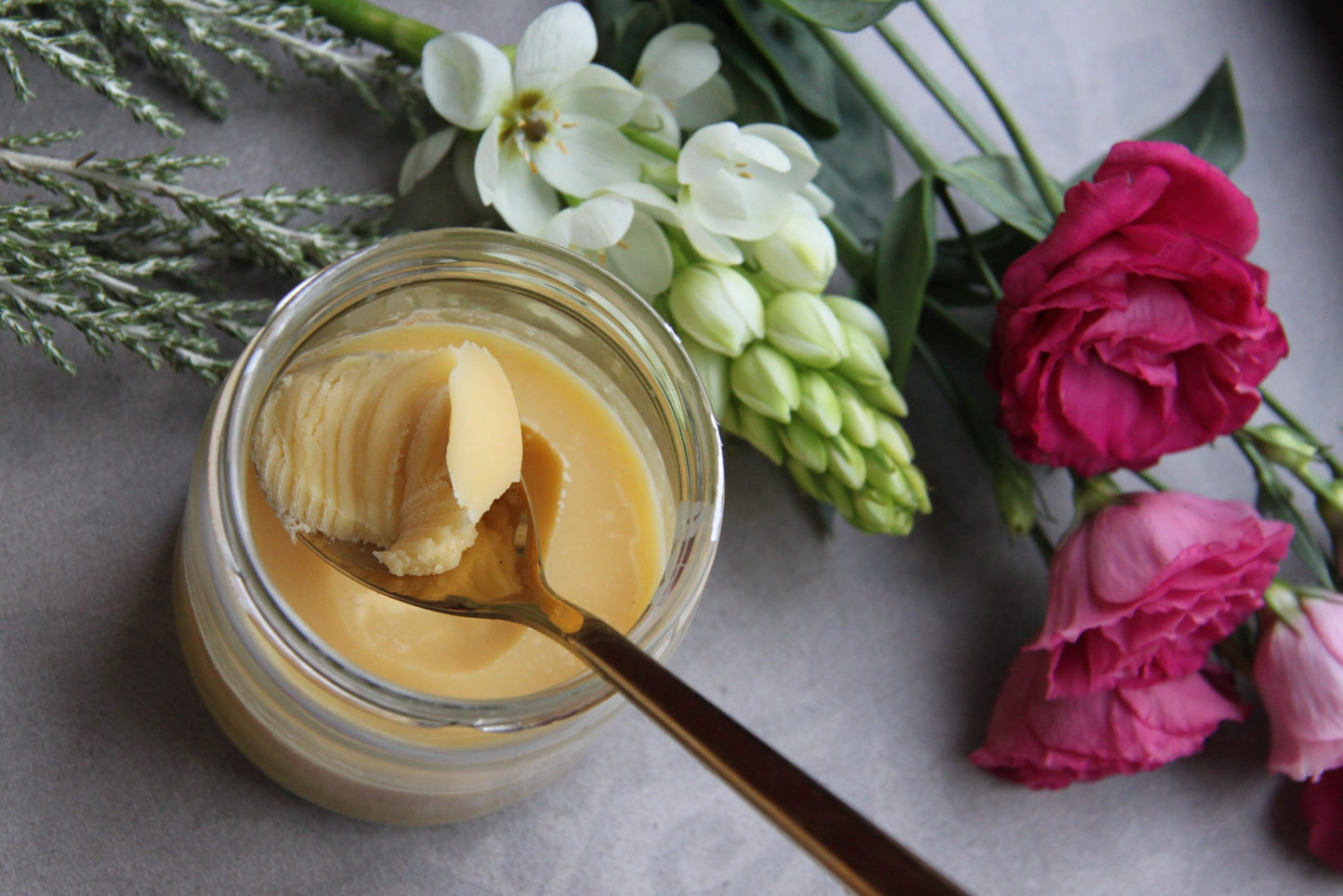
Do you remember eating besan ka ladoo as a kid? That amazing and divine sweet that everyone used to love when they were toddlers! As soon as we started opening the jar, the delightful aroma of ghee mixed with the perfect proportion of sweet and flour would make us overlook everything and chomp on those amazing ladoos like we hadn’t eaten them in ages!
Grandma used to feed you a lot of tasty sweets made from ghee and dry fruits as a kid, and then pour a big dollop on the steaming dal-chawal in your meal!
However, as a matter of fact, and time, we have all developed certain perceptions about sweets, ghee, calories, and the like as we are growing up. The definition of being fit and healthy has been described to us in such a way that we have begun to consider all of these things to be a crime to consume!
If you hold the same opinion, let us reveal to you, both sides of this coin!
The 'Amritam' of Ayurveda
All living creatures on Earth are made up of five basic elements of nature, namely the Earth, Water, Fire, Air, and Space, which are collectively known as Panchabhootas, and their health is influenced by Tridoshas, namely Vata (air), Pitha (fire), and Kapha (space) (Phlegm). Any disruption in the natural balance of these five elements may result in disease. Based on these fundamental life principles, various remedial systems were developed, of which, Ayurveda is for humans.
Hindus deem the Indian cow as a sacred animal. Since Vedic times in Indian civilization, the cow has been described as Kamdhenu (one who grants all wishes). It’s thought to be a “mobile hospital” for treating various ailments. A variety of diseases can be cured by using cow-derived products. Cow urine, milk, ghee, curd, and dung are extensively described in ancient Ayurvedic scriptures such as Charaka Samhita, Sushruta Samhita, and BrahadWagbhatt.
Cow ghee, butterfat derived from cow milk, is said to have many medicinal properties, including being energy-cooling, rejuvenating, bestowing luster and beauty, improving memory and stamina, increasing intellect, and promoting longevity. It has aphrodisiac properties and protects the body from a variety of diseases (1).
Cow ghee v/s Olive oil
Nowadays many of us are shifting to the use of olive oil in our diet. Moreover, many are considering olive oil superior to the desi cow ghee. Speaking calorically, both, one tablespoon of olive oil and one tablespoon of desi cow ghee, gives the same amount of calories. The difference just lies in the fatty acid composition of both. Cow ghee has a geographic advantage over olive oil as it is native to the region it is prepared in. Any native food suits your body way better than something which isn’t native. So, both the olive oil and ghee are good on their sides, but cow ghee will always have its benefits over the olive oil if consumed in proper proportions.
The Superior-being
Ghee is nutritionally superior to other oils/fats due to its high content of medium-chain fatty acids (MCFAs), which are absorbed directly by the liver and burned for energy. As a result, it can be a reliable source of energy for athletes. Furthermore, the energy from medium-chain fatty acids can be used to burn other fats in the system and lose weight (1), indicating that these MCFAs have anti-obesity properties. Medium-chain fatty acids (MCFAs) differ from long-chain fatty acids in their physical and metabolic properties, making them a readily available cellular energy source. For more than 50 years, these properties have been used to treat lipid absorption disorders, malnourished patients, and, more recently, subjects with long-chain fatty acid oxidation defects. (2)
An Absolute Keeper
Ghee, unlike other oils, contains only butyric acid, a short-chain fatty acid (3) that contributes to its distinct flavor and ease of digestion. It stimulates the secretion of gastric acid, which aids in digestion. It has been demonstrated that people with faulty digestive tracts do not produce butyric acid. Adequate butyric acid production promotes the production of killer T cells in the gut and, as a result, a strong immune system. Furthermore, ghee-based formulations are well-scripted in the Ayurvedic system of medicines for wound healing. According to studies, consuming up to 10% ghee in the diet altered blood lipid profiles in such a way that the risk factors for cardiovascular disease were not increased (1). For centuries, Ayurvedic physicians have used ghee enemas to reduce inflammation. Cow ghee is high in vitamins A, D, E, and K, all of which are essential for good health.
Conclusion
In Ayurveda, ghee is placed under most sattvic foods and is considered to promote positivity, growth, and expansion of consciousness. The positive subtle effects of ghee are said to come from the fact that it comes freely from cows. Cows are domestic animals in most parts of the world, but these are considered special and holy in Hindu cultures of India. Therefore, the milk from cows contains the essence of all those energies, and ghee is the essence of the milk. Ghee is used as a suitable carrier for many herbs and spices with different medicinal properties, which are to be absorbed and transported to targeted areas of the body. This is why Ayurveda uses ghee in thousands of different herbal preparations for curing various ailments. Besides this, cow ghee is a rich source of vitamins and MCFA’s which aid in overall wellbeing and immunity enhancement. The inclusion of cow ghee in regulated proportions can work wonders for health!
Also, explore our online pickle shop for an authentic collection of homemade Indian pickles and chutneys.
